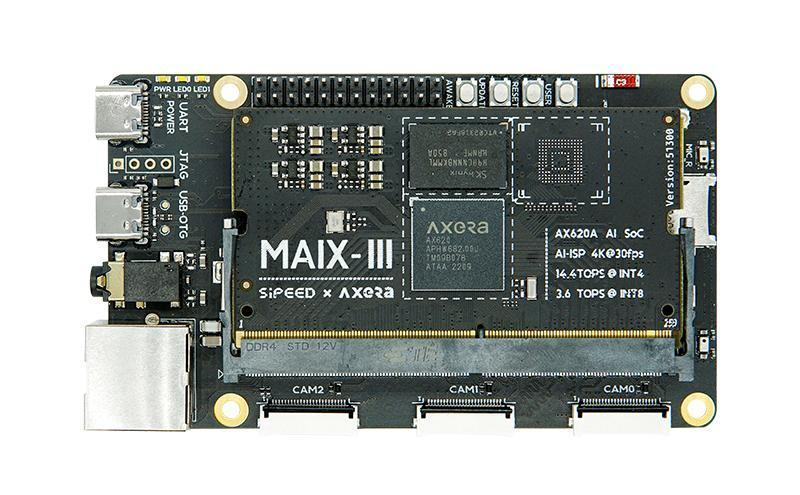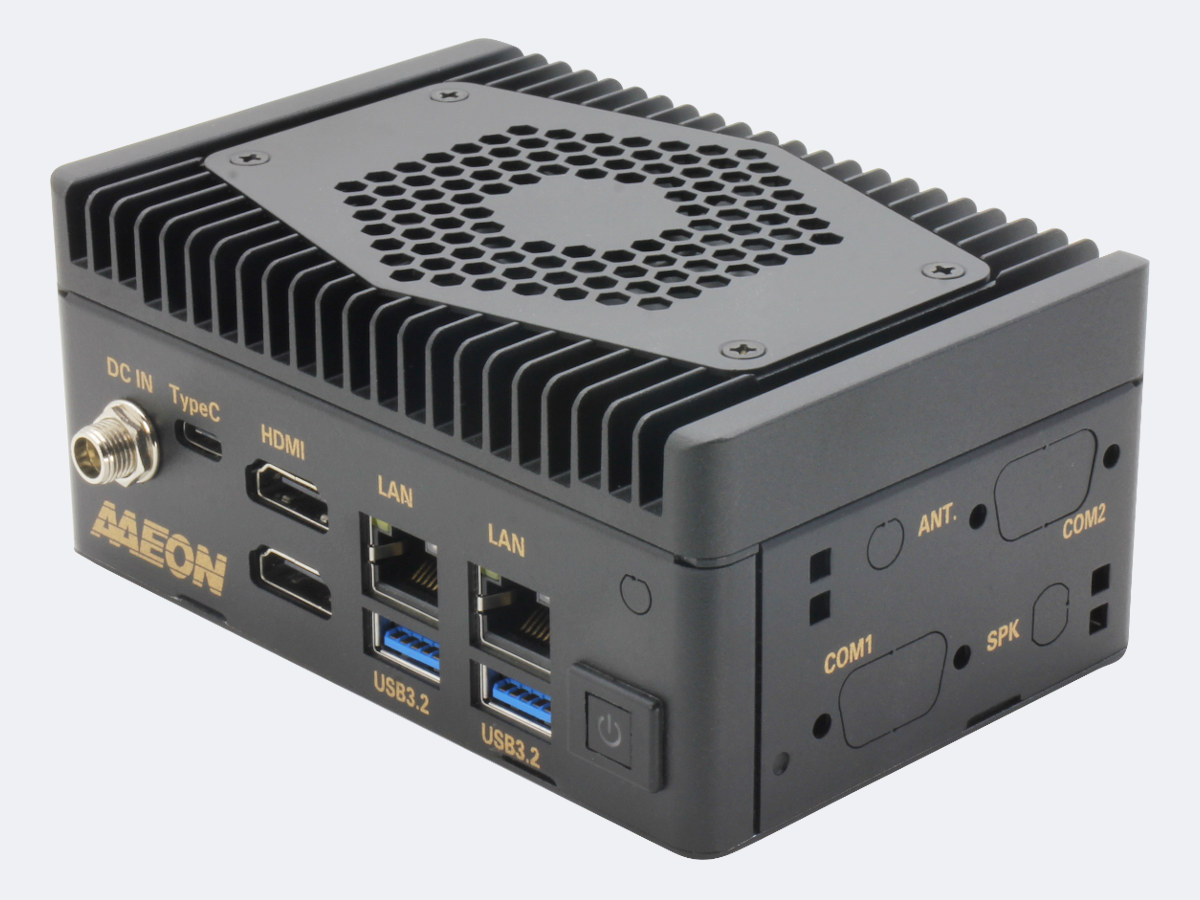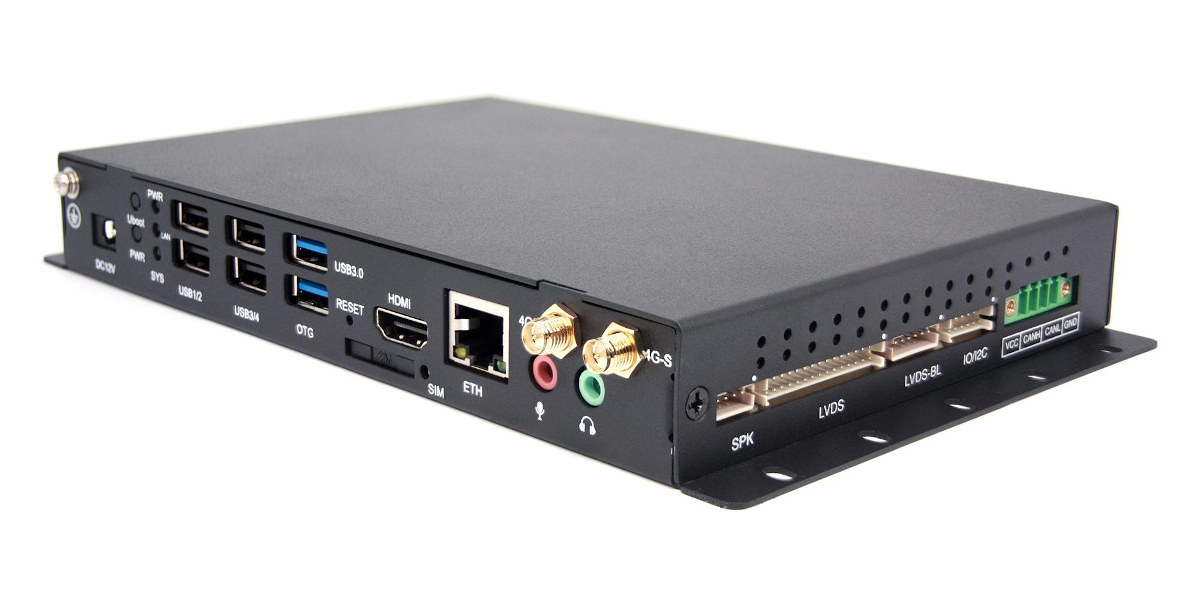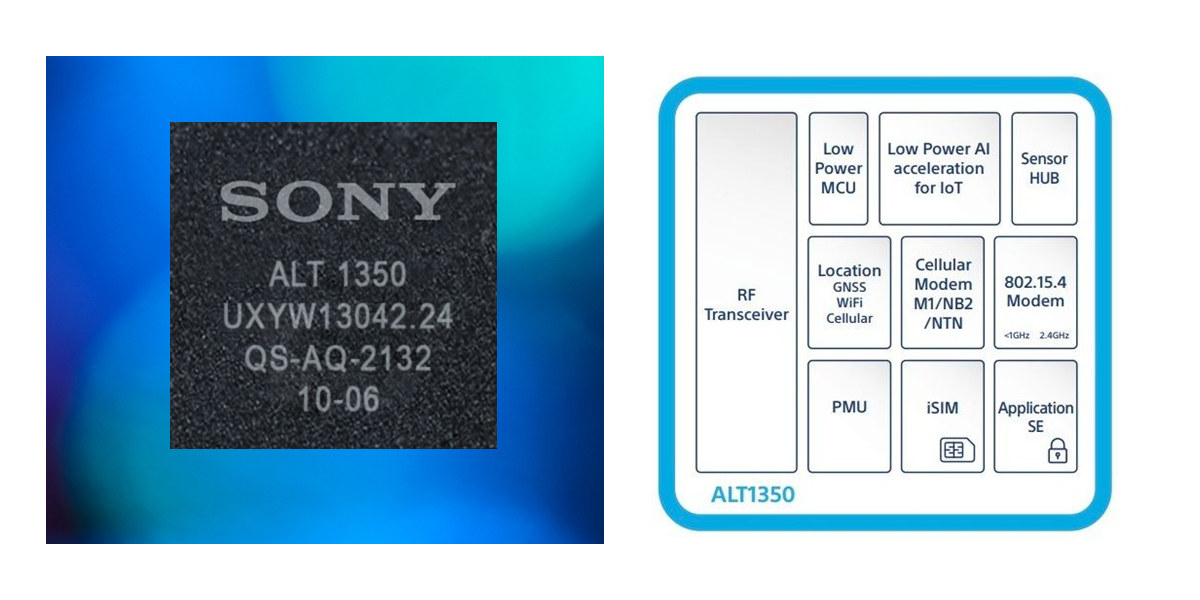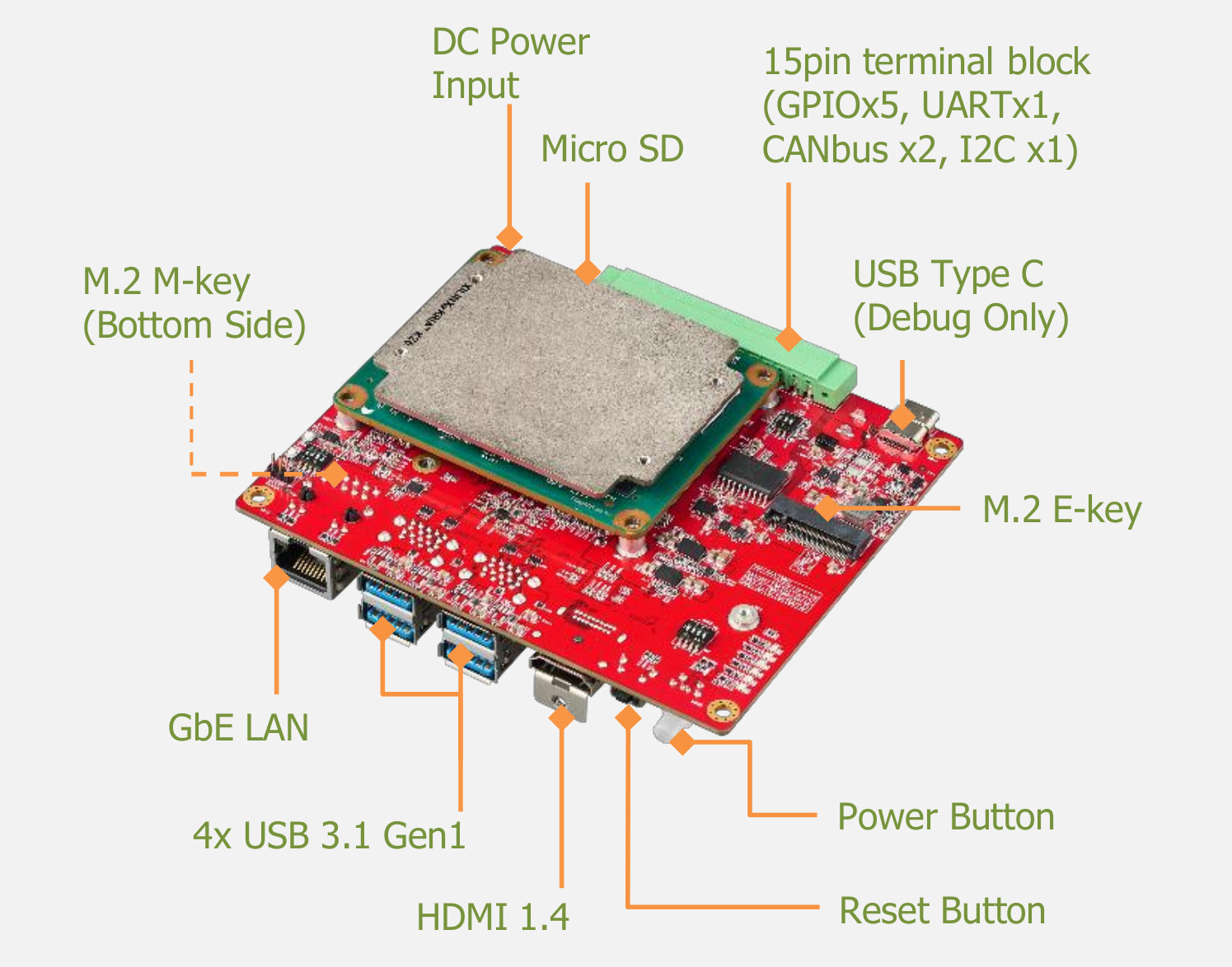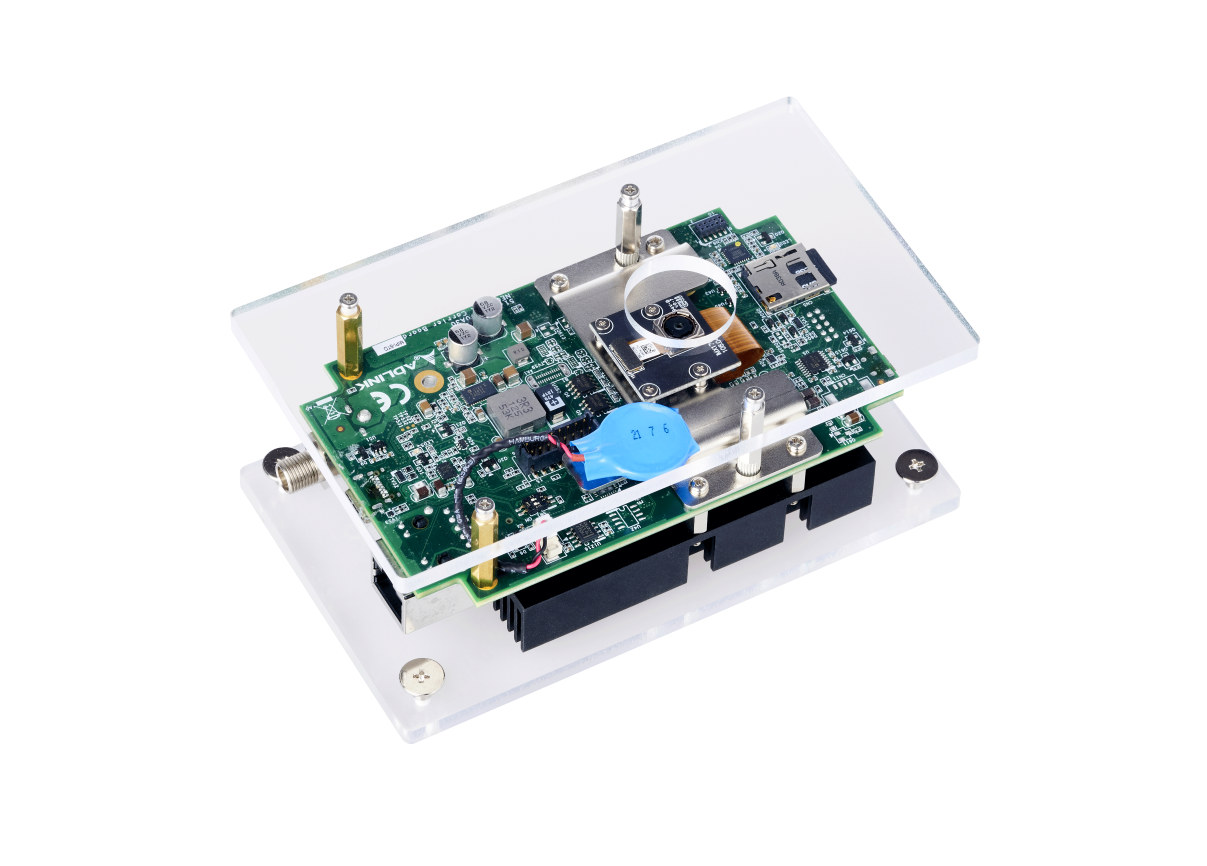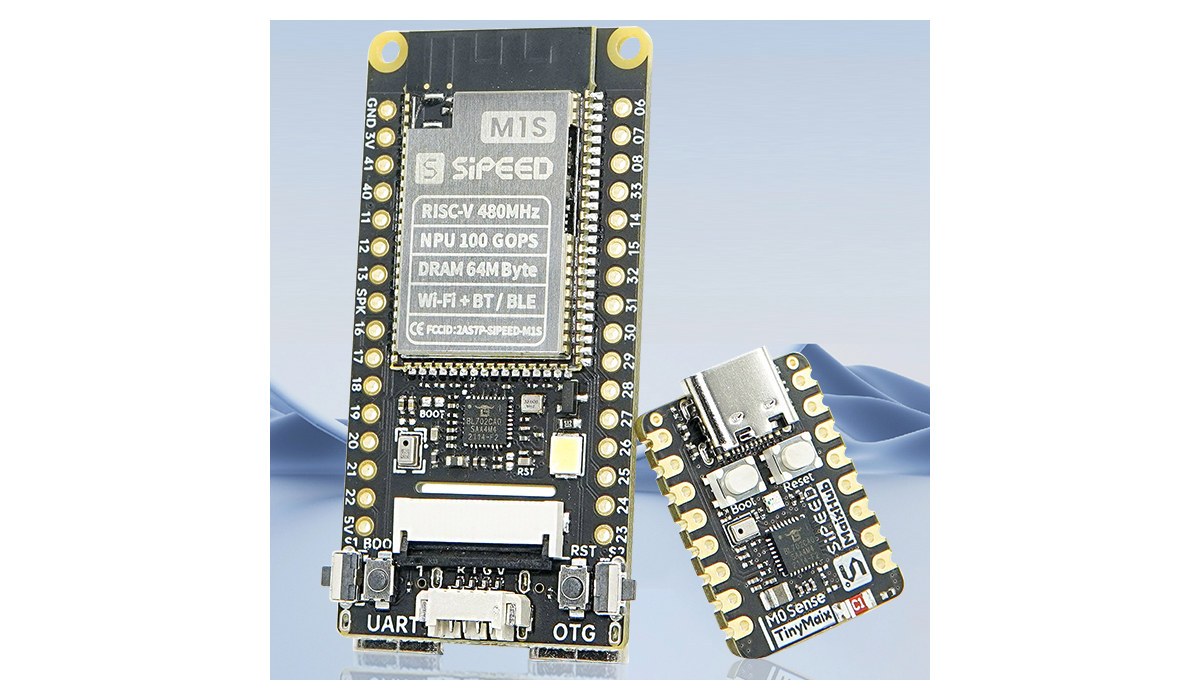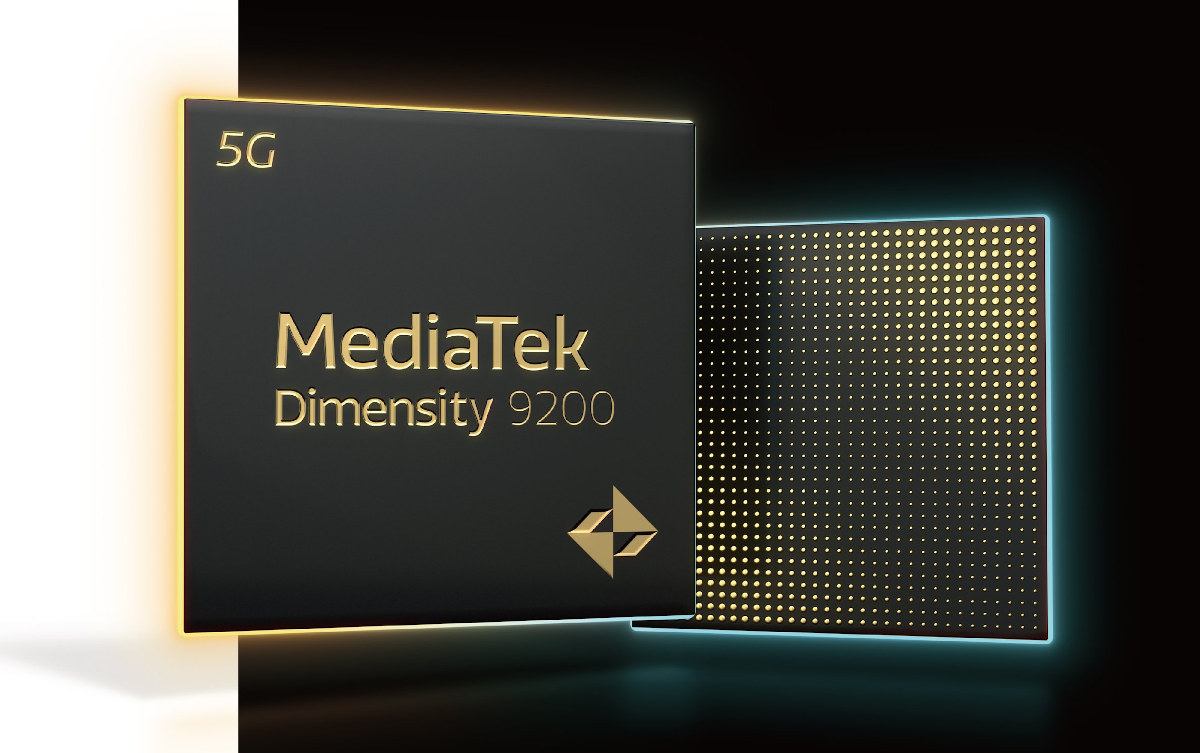Sipeed Maix-III development kit is composed of a core board equipped with AXERA AX620A AI processor and a carrier board exposing several interfaces such as Ethernet, USB, and camera connectors. resources. As noted in our earlier article about the AXERA AX620A chip, it is a quad-core Arm Cortex-A7 chip with an NPU offering a maximum of 14.4 TOPS @ INT4 or 3.6TOPSs @ INT8, and as such, this development board mainly targets AI vision applications. The board is an upgrade to the earlier Speed Maix II with an Allwinner V831 processor. Thanks to the low power consumption of the AXERA AX620A SoC, the Sipeed Maix-III board can be powered directly through its USB port as the system consumers 5W (5V@1A) with the carrier board, the system-on-module, WiFi, Ethernet, a camera, and a 5-inch display. Using the display does not require am additional heatsink or fan, nor does it require an […]
AMD Ryzen Embedded V2516/V2718 mini PC supports three 4K displays, 2.5GbE, RS232/RS422/RS485
AAEON PICO-V2K4-SEMI mini PC, powered by an AMD Ryzen Embedded V2516 or V2718 processor, can drive up to three 4K displays, offers 2.5GbE and GbE networking, several USB 3.2 ports, as well as two optional COM ports supporting RS232, RS422, and RS485. The first mini PC from the company featuring AMD Ryzen V2000 Series processors also comes with up to 32GB RAM, a 64GB NVMe SSD, as well as M.2 and mPCIe sockets for expansion, and its compact form factor makes it suitable for edge computing, embedded gaming, and image processing applications. PICO-V2K4-SEMI specifications: AMD Ryzen Embedded V2000 processor (one or the other) Ryzen V2718 octa-core/16-thread processor @ up to 1.7-4.15 GHz (Turbo) with Radeon RX Vega 7 GPU; TDP: 10-25W Ryzen V2516 hexa-core/12-thread processor @ up to 2.1-3.95 GHz (Turbo) with Radeon RX Vega 6 GPU; TDP: 10-25W System Memory – 8GB to 32GB LPDDR4x 3733 MHz Storage Up […]
AIoTBOX-3568GK industrial control box offers six USB ports, RS232, RS485, CAN Bus, LVDS, and more
SMDT AIoTBOX-3568GK is an industrial control PC powered by a Rockchip RK3568 quad-core Cortex-A55 AIoT processor and offering plenty of interfaces including six USB ports, four RS232 ports, and terminal blocks with RS485 and CAN bus interfaces. The embedded computer ships with 2GB RAM and 16GB eMMC flash by default, and also features HDMI and LVDS display interfaces, 3.5mm jacks for headphones and microphone, as well as network connectivity through a Gigabit Ethernet port, WiFi, and optional Bluetooth and/or 4G LTE. AIoTBOX-3568GK specifications: SoC – Rockchip RK3568A quad-core Cortex-A55 processor @ up to 2.0GHz with Arm Mali-G52 2EE GPU with support for OpenGL ES 1.1/2.0/3.2, Vulkan 1.1, OpenCL 2.0, 0.8 TOPS NPU, and VPU with 4Kp60 H.265/H.264/VP9 video decoding, 1080p60 H.265/H.264 video encoding System Memory – 2GB RAM by default Storage – 16GB or 32GB eMMC flash, MicroSD card slot, optional 2KB EEPROM Video Output HDMI port up to 4Kp60 […]
Sony ALT1350 5G cellular IoT chip supports NTN connectivity, integrates sub-GHz and 2.4GHz radios
Sony ALT1350 is a new ultra-low-power 5G LPWA LTE-M/NB-IoT chip that supports Non-Terrestrial Networks (NTN) for satellite connectivity and also integrates sub-GHz and 2.4 GHz radios for short-range communication and improved efficiency. The chip is comprised of an Arm Cortex-M4 microcontroller core as well as an Arm Cortex-M0+ always-on core for sensors and will be upgradable to 3GPP Release 17 to support higher bitrates for Cat-M1 (eMTC) and Cat-NB2 (NB-IoT). It also implements GNSS, cellular and wifi-based location, supports AI acceleration, and embeds a secure element for secure communication. Sony ALT1350 specifications: MCU cores Arm cortex-M4 with 1MB NVRAM and 752KB RAM Arm Cortex-M0+ low power always-on sensing hub Memory & Storage I/F – Quad SPI flash and PSRAM Wireless Cellular 3GPP Release 15, future proof to support 3GPP up to 17 through SW upgrade CAT-M1: Up to 588 Kbps in DL, and 1119 Kbps in uplink (up to 1.2mbps […]
Innodisk EXMU-X261 FPGA Machine Vision Platform is based on AMD Xilinx Kria K26 SoM
Innodisk, better known for its embedded storage and memory chips, had announced its intention to turn to the AI market earlier and started with the launch of USB camera modules last month, but the company has gone a step (or two, or three) further with the introduction of the EXMU-X261 FPGA machine vision platform. The EXMU-X261 is powered by an AMD Xilink Kria K26 system-on-module and features HDMI 1.4 video output, Gigabit Ethernet, four USB 3.1 Gen 1 ports for the cameras and other peripherals, as well as two M.2 sockets and a terminal block for expansion. EXMU-X261 specifications: System-on-module – AMD Xilinx Kria K26 FPGA module powered by a Zynq UltraScale+ XCK26 FPGA MPSoC with a quad-core Arm Cortex-A53 processor, up to 250 thousand logic cells, and a H.264/265 video encoder/decoder Storage – MicroSD card socket Video Output – HDMI 1.4 port Networking – Gigabit Ethernet RJ45 port USB […]
NVIDIA Jetson Nano based AI camera devkit enables rapid computer vision prototyping
ADLINK “AI Camera Dev Kit” is a pocket-sized NVIDIA Jetson Nano devkit with an 8MP image sensor, industrial digital inputs & outputs, and designed for rapid AI vision prototyping. The kit also features a Gigabit Ethernet port, a USB-C port for power, data, and video output up to 1080p30, a microSD card with Linux (Ubuntu 18.04), and a micro USB port to flash the firmware. As we’ll see further below it also comes with drivers and software to quickly get started with AI-accelerated computer vision applications. AI Camera Dev Kit specifications: System-on-Module – NVIDIA Jetson Nano with CPU – Quad-core Arm Cortex-A57 processor GPU – NVIDIA Maxwell architecture with 128 NVIDIA cores System Memory – 4 GB 64-bit LPDDR4 Storage – 16 GB eMMC Storage – MicroSD card socket ADLINK NEON-series camera module Sony IMX179 color sensor with rolling shutter Resolution – 8MP (3280 x 2464) Frame Rate (fps) – […]
Sipeed M1s & M0sense – Low-cost BL808 & BL702 based AI modules (Crowdfunding)
Sipeed has launched the M1s and M0Sense AI modules. Designed for AIoT application, the Sipeed M1s is based on the Bouffalo Lab BL808 32-bit/64-bit RISC-V wireless SoC with WiFi, Bluetooth, and an 802.15.4 radio for Zigbee support, as well as the BLAI-100 (Bouffalo Lab AI engine) NPU for video/audio detection and/or recognition. The Sipeed M0Sense targets TinyML applications with the Bouffa Lab BL702 32-bit microcontroller also offering WiFi, BLE, and Zigbee connectivity. Sipeed M1s AIoT module The Sipeed M1S is an update to the Kendryte K210-powered Sipeed M1 introduced several years ago. Sipeed M1s module specifications: SoC – Bouffalo Lab BL808 with CPU Alibaba T-head C906 64-bit RISC-V (RV64GCV+) core @ 480MHz Alibaba T-head E907 32-bit RISC-V (RV32GCP+) core @ 320MHz 32-bit RISC-V (RV32EMC) core @ 160 MHz Memory – 768KB SRAM and 64MB embedded PSRAM AI accelerator – NPU BLAI-100 (Bouffalo Lab AI engine) for video/audio detection/recognition delivering up […]
MediaTek unveils Dimensity 9200 Octa-core Cortex-X3/A710/A510 5G mobile processor
MediaTek has just launched the Dimensity 9200 octa-core flagship 5G mobile processor with one Cortex-X3 core, two Cortex-A710 cores, and four Cortex-A510 cores, as well as the latest Arm Immortalis-G715 GPU. Manufactured for a TSMC 4nm processor for efficiency, the new flagship processor supports mmWave 5G and sub-6GHz cellular connectivity, LPDDR5x 8,533 Mbps memory, UFS 4.0 storage, and embeds a faster MediaTek APU 690 AI processor MediaTek Dimensity 9200 specifications: Octa-core CPU subsystem 1x Arm Cortex-X3 core at up to 3.05 GHz 3x Arm Cortex-A710 cores at up to 2.85 GHz 4x Arm Cortex-A510 cores up to 1.80GHz 8MB L3 cache 6MB system cache GPU – Arm Immortalis-G715 with support for Vulkan 1.3, hardware-based ray tracing engine AI Accelerator – MediaTek APU 690 AI processor with MDLA (MediaTek Deep Learning Accelerator), MVPU (MediaTek Vision Processing Unit), SME (I don’t know what that is), and DMA Memory I/F – LPDRR5x 8,533 […]


